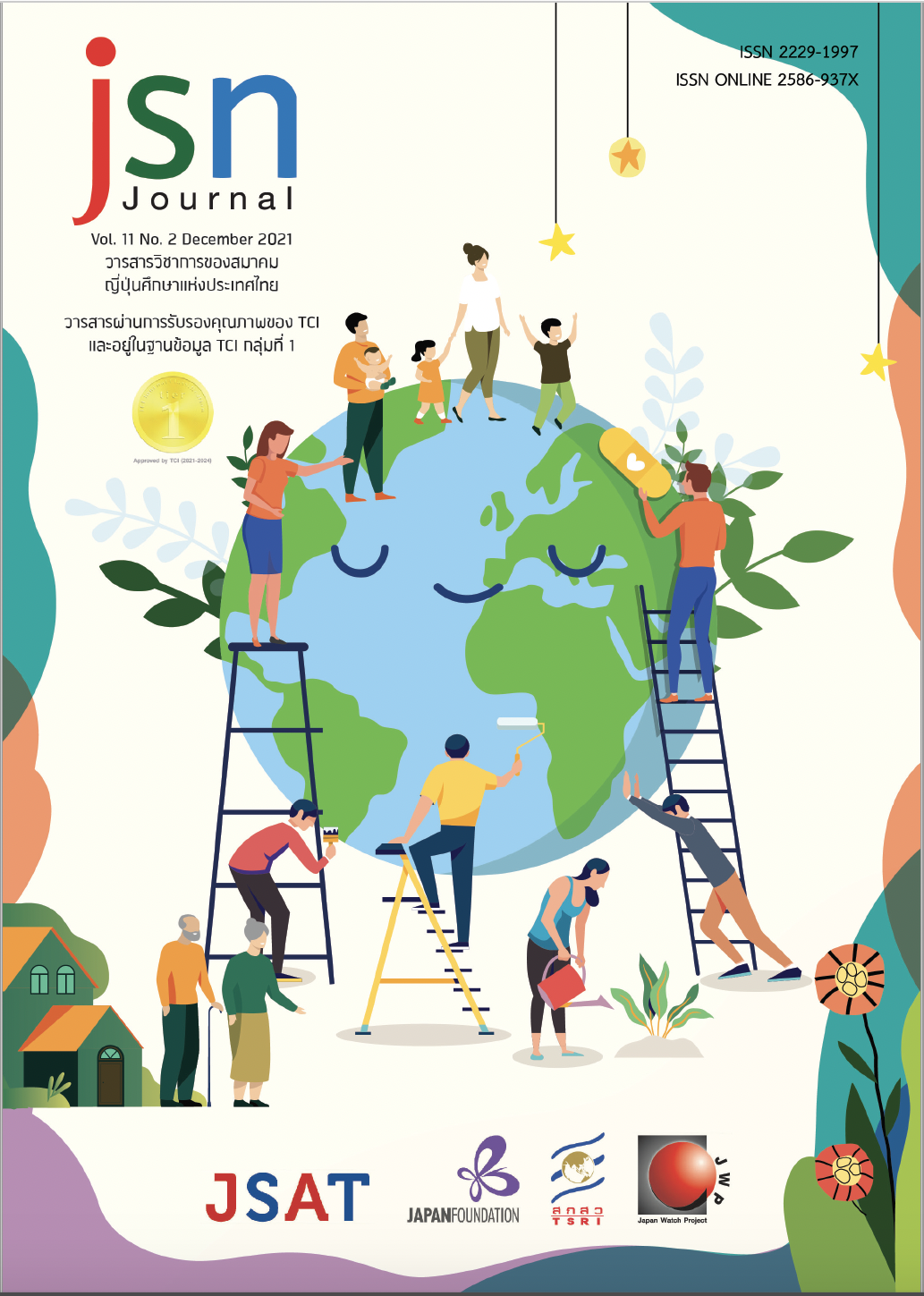The Use of Simele in Hōjōki
Main Article Content
Abstract
Hōjōki is a famous Japanese literary work written in 1212 by Kamo no Chōmei. The first half of this work depicts the impermanence of life through the description of various disasters such as fire whirlwind, famine and earthquake. The second half describes the peacefulness of ordination and living in solitude. In Hōjōki, there are many examples of figurative expression, especially simile. This article aims to analyze the characteristics of the use of simile in Hōjōki. From the study, it is found that there are examples of using simile to convey images of concrete objects and to symbolize abstract things, especially impermanence. The author often uses natural elements, such as rivers, waves, clouds, and the moon, as parables which help to enhance the reader’s imagination. It also reflects the emotions and thoughts of the author who lived by the river surrounded by nature.
Article Details

This work is licensed under a Creative Commons Attribution-NonCommercial-NoDerivatives 4.0 International License.
ข้อความและข้อคิดเห็นต่างๆ ในบทความเป็นของผู้เขียนบทความนั้นๆ ไม่ใช่ความเห็นของกองบรรณาธิการหรือของวารสาร jsn Journal
References
赤羽学. (1976).「文芸と歴史-『源氏物語』と『方丈記』と『奥の細道』」『北住敏夫教授退官記念日本文芸論叢』590-602.
浅見和彦. (2008).「『方丈記』-火事の文学史」『中世文学の回廊』勉誠出版.
浅見和彦. (2012).『方丈記』笠間書院.
魚尾幸久. (2012).「天変地異の描写から」『新視点・徹底追跡 方丈記と鴨長明』勉誠出版.
大隅和雄. (2004).『方丈記に人と栖の無常を読む』吉川弘文館.
小林保治. (2012).『超訳方丈記を読む』新人物往来社.
左方郁子. (2012).『新訳方丈記乱世を生き抜くための「無常観」を知る』PHP研究所.
武田友宏. (2007).『方丈記』角川学芸出版.
竹本朝之. (2012).『800年の時を経て蘇る鴨長明作『方丈記』時代の事件簿』徳間書店.
土田知雄. (1983).『新註方丈記全訳』武蔵野書院.
中野孝次. (2007).『すらすら読める方丈記』講談社.
三木紀人. (2001).『閑居の人鴨長明』新典社.
濱田浩一郎. (2012).『超口語訳方丈記』東京書籍.
安良岡康作. (2009).『方丈記』講談社.
簗瀬一雄. (2010).『方丈記』角川学芸出版.


